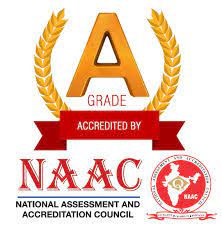Change is the law of nature and this law applies to businesses running in modern times. Like other industries, healthcare is also approaching transformation beyond recognition. Several technological, regulatory, and operational challenges are set to transform the way healthcare is delivered, patients are treated and private providers operate. Best B-school in Bangalore
The healthcare industry in the times ahead will be shaped by many forces, however, the critical forces governing the emergence of this business in the next decade will focus on:
- Improving patient access
- Prevent catastrophic type of expenditure (For example COVID-19)
- Strengthening of the healthcare system through strategic purchasing
- Risk pooling and improving the overall delivery
- Impetus on digital healthcare to counter challenges of workforce shortage and operational inefficiencies.
Understanding the forces changing the healthcare landscape and devising a clear strategy to act upon it will prove to be a daunting task. For this, there is a need to focus on patient experience, investing smartly in relevant technologies, establishing ecosystems through collaboration, and establishing an agile but robust governance structure.
INDIA'S HEALTHCARE INDUSTRY CHALLENGES, OPPORTUNITIES, AND THREATS
CHALLENGES
Despite the growth in Indian Healthcare, the industry has got its plethora of challenges.
Buildings and Infrastructure: A skewed distribution of healthcare infrastructure, poor maintenance of its existing facilities, and lack of faith in some of the locally manufactured equipment.
Human Resources: Acute Shortage of Manpower at most levels in the healthcare industry. Absence of a uniform and effective HR policy and inadequate HR database. Long-term retention of qualified healthcare staff in Tier 2 & Tier 3 locations. Intense competitiveness amongst Hospitals in all Tier cities has led to an unsustainable increase in remuneration for qualified personnel. This is definitely a show-stopper for ensuring growth in this sector.
Pharma and Drugs: Difficult to coordinate and regulate the pharma sector, since it is controlled by multiple government departments. Further with increased regulations in prices of drugs and consumables, it is important to ensure that healthcare providers are able to remain financially sustainable in the long term.
OPPORTUNITIES
While challenges exist, the industry has innumerable opportunities to flourish in the coming years.
The commitment of Government: Commitment of the Government is at a high to improve the situation. Various incentives are being passed by the Government to increase domestic productions of devices and equipment (recent manufacturing initiatives of Ventilators and PPE are clear indicators), for setting up laboratories and diagnostics, facilities for medical education, and others.
Human Resources: Large population engenders massive domestic demand for healthcare services. Also, India’s twin demographic pattern of growth in the number of young and old people presents an opportunity to serve the healthcare expectations of the young while attending to the increasing healthcare requirements of the elderly. Low-cost qualified manpower potentially makes it possible to provide treatment to overseas patients at very competitive prices.
Pharma and Drugs: Increasing domestic focus on generics. There exists a high demand for drugs for both communicable and non-communicable diseases and India is the favored country for clinical trials due to its established advantages.
THREATS
Rising Costs: Input costs in healthcare are rising. Minimum wage revisions are underway in several categories of manpower; real estate continues to inflate, and import costs of equipment and consumables are high consequent to an increase in INR / USD rate. Increased competition has also meant that compensation expectations for skilled manpower will go up.
Human Resources: Shortage of skilled manpower is an acute problem in this sector. Unless immediate steps are taken to increase the number of doctors, nurses, and paramedical personnel, the shortage will lead to prohibitive costs and derail the industry in general.
Regulatory interventions: The intrinsic value of a service is more than just the cost of inputs. Any attempt to regulate the prices of healthcare inputs without providing for the comprehensive costs of providing quality services will compromise the quality of care.
Medical Education: Brain Drain and inability to retain quality faculty will have a lasting impact on the quality of doctors graduating from medical school.
See Also:
- Business Analytics in Agriculture: Emerging Practices and Research Issues| Best MBA colleges in Bangalore
- What Are Good Topics For a Master Thesis about Business Intelligence?|MBA admission in Bangalore
- What is the market demand for a business analyst certification? |Top Ranked MBA college in Bangalore
- How to Evaluate, Accept, Reject, or Negotiate a Job Offer|Best colleges for MBA correspondence in Bangalore
- Data Science in the Indian Agriculture Industry|MBA in operations management in Bangalore
- What Are Good Dissertation Ideas for Business Analytics|Top MBA college in Bangalore
- What Should HR Do? The Seven Practices of High-Impact HR|Best MBA Colleges in Bangalore accepting PGCET?


.jpg)
.jpg)







